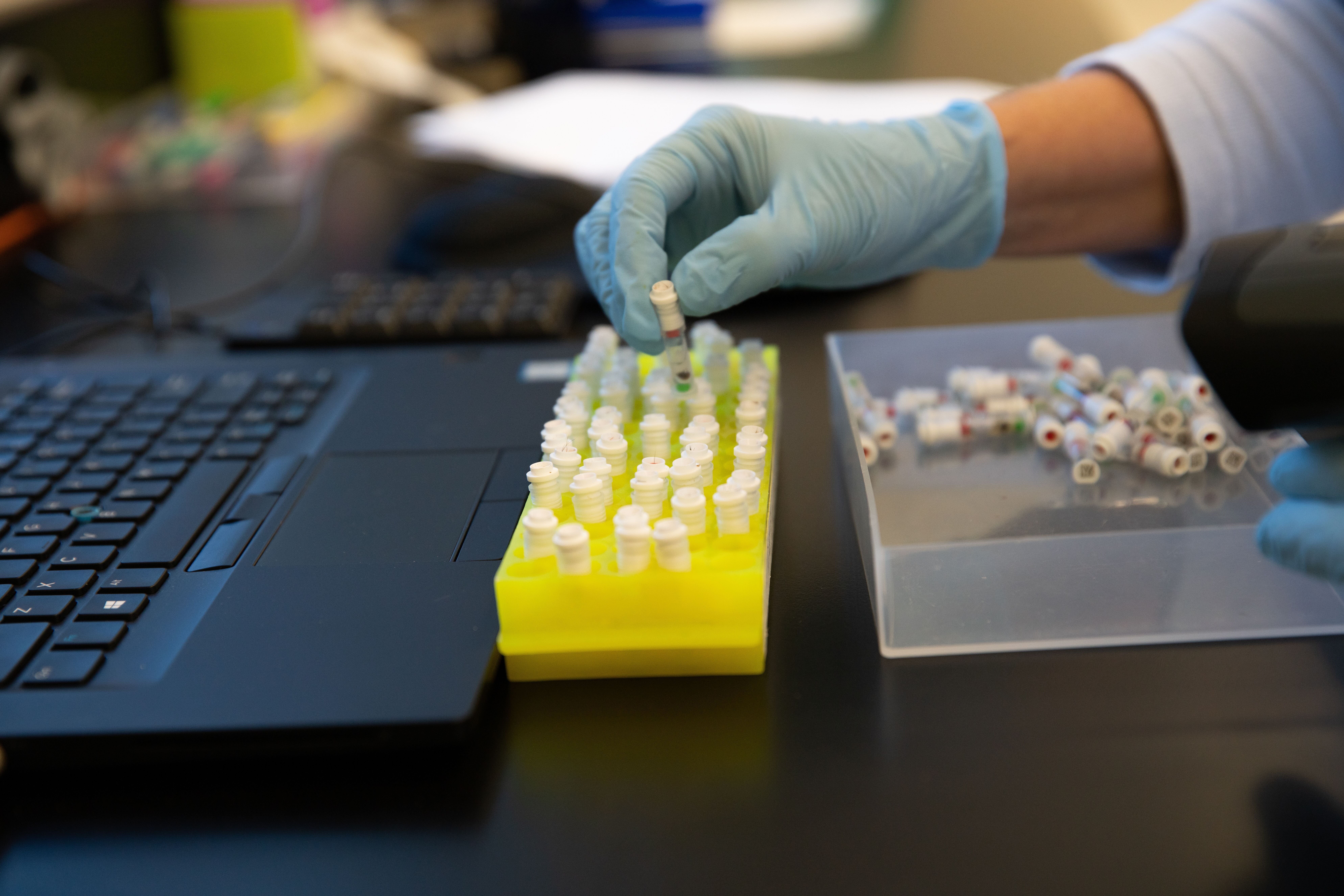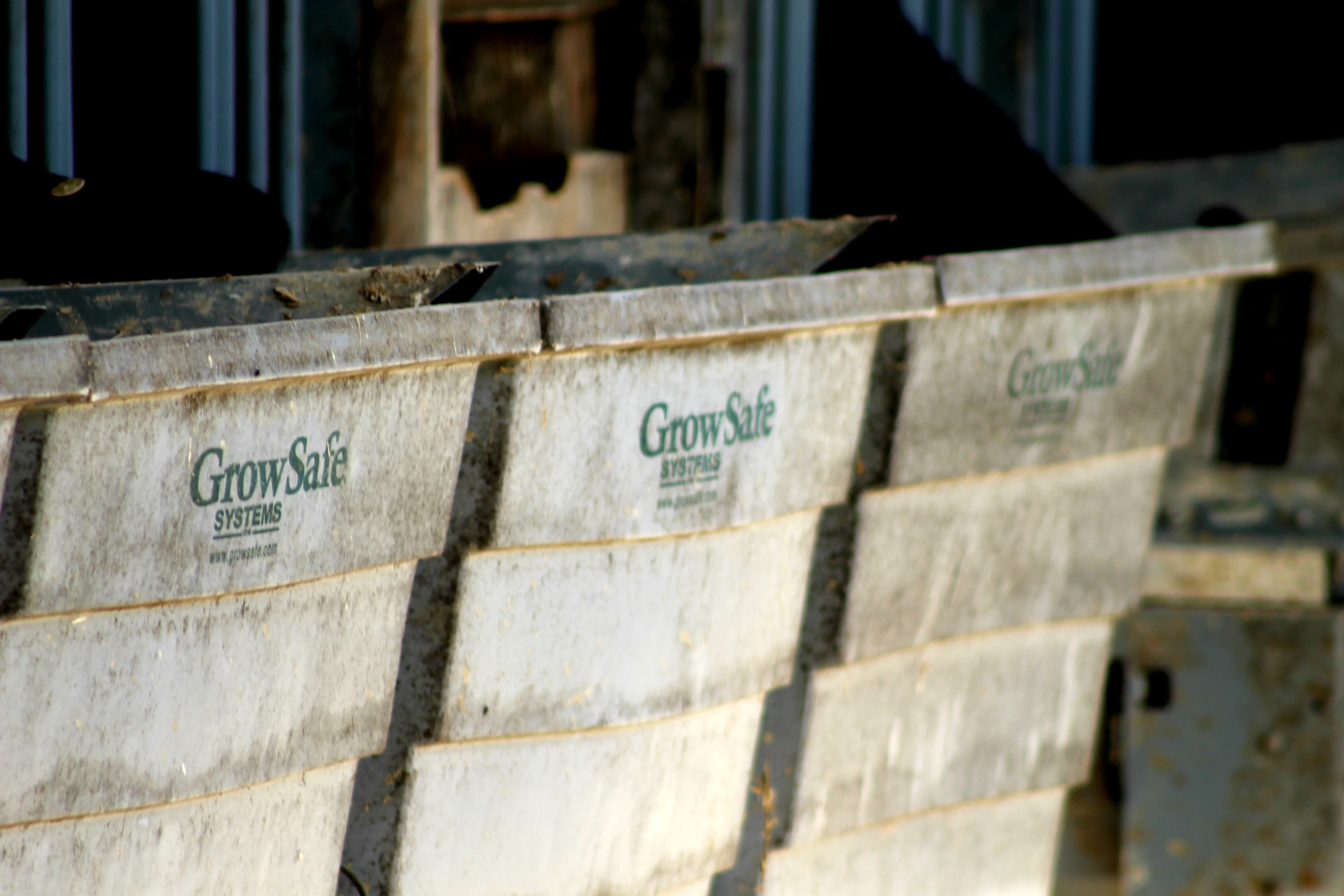Q & A - Dairy Farmer magazine with Juan Moreno of ST Genetics on Genomic Testing and the future of feed efficiency.

After years of trial work, the major US cattle breeding organisation ST Genetics has announced its world first of a feed efficiency prediction. Peter Hollinshead talks to cheif executive Juan Moreno about how US producers are using genomic testing to select their replacement stock and asks about the impact of feed efficiency in particular.
OK, let’s kick off if we may with the genomic testing of heifers and uptake here in the UK is pretty slow I have to say at about 10% of the heifer crop -- how widespread is this technique in the States?
In the U.S I would say around 30%. Dairy producers want to make an early decision as to whether a female is going to be productive in the long term or not. By using genomic testing they are able to make those management decisions, and the figures show us that we get 76% accuracy on that genomic prediction.
Can you just give me a flavour of the way genomic testing is being used on US farms?
I have to say last year the biggest percent of genomic testing we did in the U.S. at STgenetics lab, Genetic Visions-ST, was from non-registered (commercial) herds. A lot of those herds want to make an accurate and fast decision on their young heifers, as to their genetic value. They want to decide to keep or not keep an animal and to breed or not breed an animal. They will not only decide the genetic level of Holstein semen to use but also where to use beef semen.
Now you do a lot of the UK testing in your labs, do you think it is the cost of the test that is putting people off, producers remaining unconvinced of the economic gains, or even the reliability of the figures that worries them….
I guess that reason is uncertain to me. We raise a lot of heifers in the U.S. and for the first 60 days of the life that animal is on milk it costs about $5.00 per day. After it might cost $2.00 per day. So in 60 days one spends €300.00. In two years, the question turns into then, why should a dairy farmer wait two years to find if the genetic value and performance of a heifer is below average and put in $1400-1500 dollars in costs to bring her to calving. If they can spend $30 as a calf and know her genetic value sooner, determining if she will be a profitable individual or if she will fall short. That $30 investment is saving dairy producers $1400 in costs.

Yes, but what’s actually stopping a bigger uptake than 10% in the UK?
I believe firstly, it’s communication. People may look at the cost and try to reason whether it is worth the investment to do that test or not. Most people look at genomic testing in terms of genetic gain, and while there is a lot of value in genetic gain, there is a lot of money to be saved in not having to raise animals that are not going to perform. We are working to serve our Cogent customers better and better every day and part of that is communicating on how genomic testing is a tool used ultimately to improve their bottom line. We’re here to work with producers to help them become more profitable.
What can we expect from this in the future -- we are currently looking mainly at production traits but I see the Zoetis ‘wellness’ offer has put the emphasis on health, so will we be able to breed cattle that will rarely be ill in their lives?
At STgenetics our genomic information gives a dairy farmer health traits, feed efficiency traits, haplotypes plus all the traditional information. 70 traits in all. Are health traits important – absolutely. Some farmers may have a problem with mastitis while for others it may be lameness. What genomics does, it allows farmers to make a selection of traits which are most important to them. What we have now, for the first time in history, is a genomic tool to do that work for the farmer. Providing the information each unique herd is looking for will allow every herd to make better decisions to align with their overall operations goal. That is the value of genomic testing.
Where do you think this will take us ultimately – will the new ‘super cow’ be genetically so highly refined that we will be breeding cattle to suit the system they will go into or even the diet they are likely to be fed later in their lives?
I don’t believe in the concept of a super cow. I follow a totally different concept. Farmers will have different sets of priorities depending on their location and their markets. For example, in one part of the UK it might be more important to breed a cow that excels at grazing, another part it might be milk solids and in a third part it might be how that cow looks. There is not one trait that fits all. Dairy farmers like different things and the concept of a super cow is the concept of making everything the same, and I don’t like that idea. STgenetics strives to bring multiple families and different options to the global marketplace to help diversify and advance herds in various different ways.
OK, I hear what you say but even within that do you see the bloodlines getting closer and closer through the studs because we are refining cows to a greater extent than in the past, and in ten years’ time are we in danger of having such a narrow gene base that we run into bloodlines becoming too close?
I see an opposite effect, with the technologies we have today we’re able to expand and increase our diversity. In the past many farmers were breeding for similar things and using the same bulls, we were narrowing the gene base with less diversity. Today bull studs have different bloodlines and are able to invest in multiple bloodlines bringing the outcross option in, even within the same company. Genomic testing allows us to see what the percent inbreeding is likely to be or not, and we can choose whether we have a low level of inbreeding or a high level. In many of our customers herds, our representatives are assisting with breeding decisions through our Chromosomal Mating Program which is a program who’s main goal is to create the best mating for the dairy producers operational goals, using genomic results by creating a favorable outcross match.
To what extent do you see genomic selection as the base tool for heifer assessment and then using ET reproduction as the faster follow-on tool to further enhance genetic gain?
This is a practice we see in some herds, but like I said, every herd and region is different. This decision can be beneficial if you did the top two or three designated donors on your farm. But these top few, would have to be quite superior to the rest of your animals. Embryo work with average donors is an expensive exercise with little reward. If a herd is steadily increasing their genetic gain but don’t have those superior individuals, you are better off, economically speaking, just doing AI with the best to the best. Otherwise the amount of improvement will be too expensive to justify using the reproduction tools you mentioned.
From what we hear from your President, we are perhaps a little more conscious of environmental aspects here in the UK than you may be over there, but is methane emission a trait you are concerned about?
Yes, we are very concerned about the environmental issues as a company and as an industry. We are also concerned about some of the wrong perceptions the general public has about animals in agriculture. We believe that not only can we make progress with some of the environmental traits so that the public feels comfortable about buying our product in their grocery store, but it can also be of great benefit to farmers.
One example is EcoFeed, which is a trait nobody has ever selected for before, but in reality it looks at feed conversion and selecting animals that will produce more with less feed. Feed is essentially 65% of the cost to operate a dairy, so if you are able to save 10% of feed costs through feed efficiency, you are saving a substantial amount of money, and what’s more, EcoFeed is a heritable trait.
To take the impact of this trait even further, at the same time; you are saving money by feeding a more sustainable cow, you are producing less methane as the cows are eating less, and if you are buying less feed there are less machinery working and less diesel being used.
With EcoFeed, at the end of the day you are saving on the environmental side, and it is one of the few traits that is a win-win proposition for the producer and consumer. That is the reason why we as company have devoted so much time and a significant amount of money to that research.

Ok, let’s look at EcoFeed in more detail. We are working on this with the herd at Edinburgh I believe, but you may have beaten us to it as you talked about EcoFeed at the Dairy Tech event in February but strangely didn’t sound fanfares about it – why not as if it is such a big breakthrough why didn’t you make more of a song and dance about it?
Well, I don’t want to come across to any farmer or consumer that our company is telling them what right or wrong is or that we know better than anyone else. We’re trying to be pro-active and sincere about it, but at the end of the day farmers are going to have to decide how important it is to them and their farming operation.
STgenetics has been investing in this project now for over seven years, testing both beef and dairy animals and we have feed conversion predictions on a large base population. We are now for the first time making this public and we will publish EcoFeed values for all animals genomically tested through Genetic Visions. If someone does genetic testing through us we will provide them with an EcoFeed genomic evaluation for that particular animal regardless of whether they bought the semen from us or not, regardless of whose bull it is, and we will publish that information on all those females to the public.
Have you already launched it in the States?
Yes, we released EcoFeed two weeks ago in the U.S. with great success, and it will be coming to the UK in the near future.
Sticking with feed efficiency if we may, is it tied to diet – the French supposedly have higher feed efficiency figures because of all the maize they feed their cows, so is that trait not diet specific and therefore country specific, and therefore not easily transferable between countries?
We know from research that certain types of feed will make animals more feed efficient than other types of feed. However, we have found that there is definitely a genetic element to it.
There is a strong correlation between animals that convert on a high roughage diet and those that convert on a high feed diet. No matter what the diet is, it is going to be the same top 100 animals and while the number 30 in one group may be the number 10 in the other, it is going to be the same top and the same bottom animals. The EcoFeed Index is a medium heritably trait, at around 22%. It allows you to make relatively fast improvement, and actually see the feed conversion trait change from generation to generation. With low heritability traits it would take a lifetime to see progress.
I believe you are the 100% owner of Cogent now with Grosvenor Holdings totally bought out, making you, I believe, the second largest cattle stud worldwide, so what, as CEO, is your strategy going forward?
It was a very fortunate situation for us to be able to purchase Cogent. We’re excited about all the opportunities this brings STgenetics, we house a lot of bulls and lot of genetics in the UK and we see it as the launching pad for many parts of the world. We will continue to invest heavily in Cogent in the UK to make it bigger and greater than ever before.
As for where we stand worldwide, I don’t know if we are number 2 or 10, it doesn’t make any difference to us. STgenetics main goal is to partner with producers and bring new technologies to the marketplace to help the farmer. If farmers are profitable they are more likely to do business with us, if they are not, companies like ours won’t be around. We want to develop the genetics that will make the farmer profitable and the end product something consumers want to buy.
And you are using science in that progress. But outsiders may ask where does all this science take us -- I believe to keep up that rate of genetic progress breeding companies are genomically testing petri-dish embryos and putting selection pressure on them by discarding say 90% of those not comprised the ‘right’ genetic material – is that right?
We make genetic decision to bring the best, most elite individuals into our lineup to offer to a worldwide market. Part of that is through embryo selection, but we will not get involved in man-made genetic modifications for commercial production. STgenetics is here to advance what nature has provided and will not get involved in genetic modification.
Roughly around 87% of the consumers live in large cities and have a total disconnect with farm production, and if they don’t want to go any further with genetic modification why on earth would we get involved with it as an industry? We’re playing with fire by doing that, we’re playing with the single most important thing to this industry, the end consumer, and the polling shows they don’t won’t us to do genetic manipulation in animals. We stand by that decision and do what we can with what we have.
The genomic testing market is starting to hot up with some of the other companies offering tempting ‘deals’, and I don’t know what percent of the UK market you test, you haven’t told me that, but they are making a big pitch to get hold of more of that business and I just wonder how you are planning to counter that?
Off the top of my head, I’m not sure what percent of the UK market we have for testing, but I will say that before we developed one chip that does it all, farmers were being charged £30+£15. Now we are doing every test for under £30 and we have seen the cost to the farmer drop. Eventually will the cost go down even further in the future – yes. Do we expect to be able to add more traits and information – yes.
Which leads me on to ask whether you feel we in the UK are in danger of falling behind the cattle breeding changes taking place in the States?
No, I don’t think that U.K. as a country is falling behind at all. I think we are all at the same level, and sourcing bulls and females in the UK is fundamental to our long term strategy, and it is important to bring some of those genetics in the U.K. back to the U.S. to continue diversifying all of our bloodlines.
Finally, how do you see the opportunities arising between the US and UK post Brexit – is it something you look forward to?
Absolutely, I think it is going to be great and will create a lot of opportunity.
